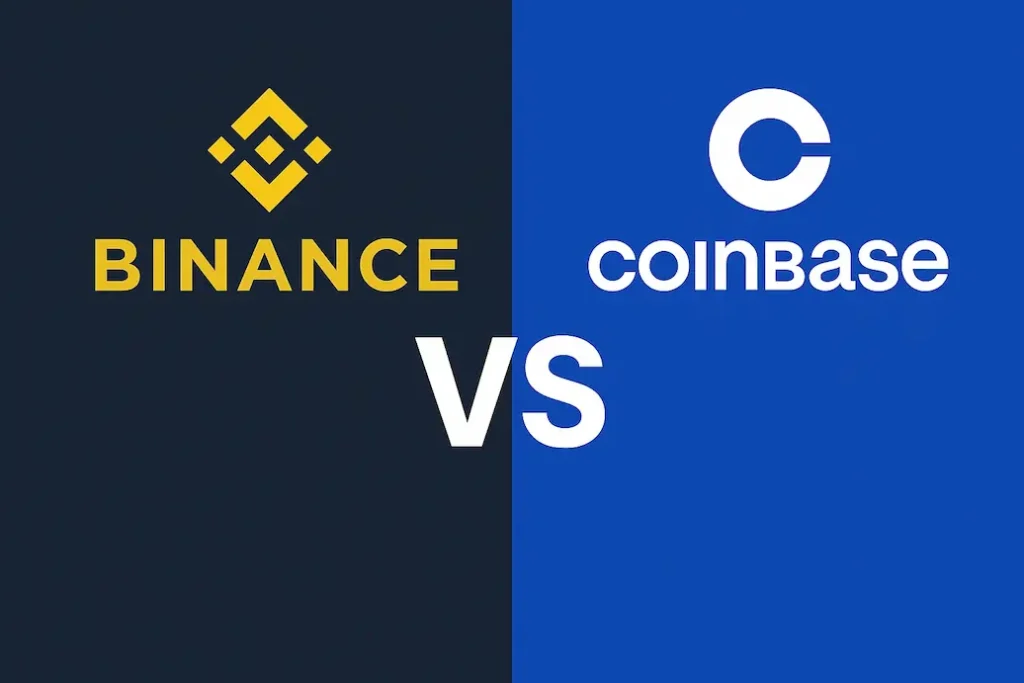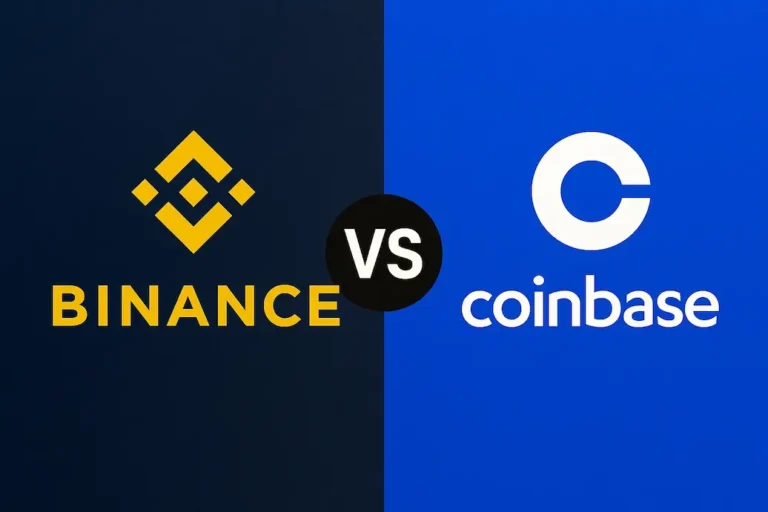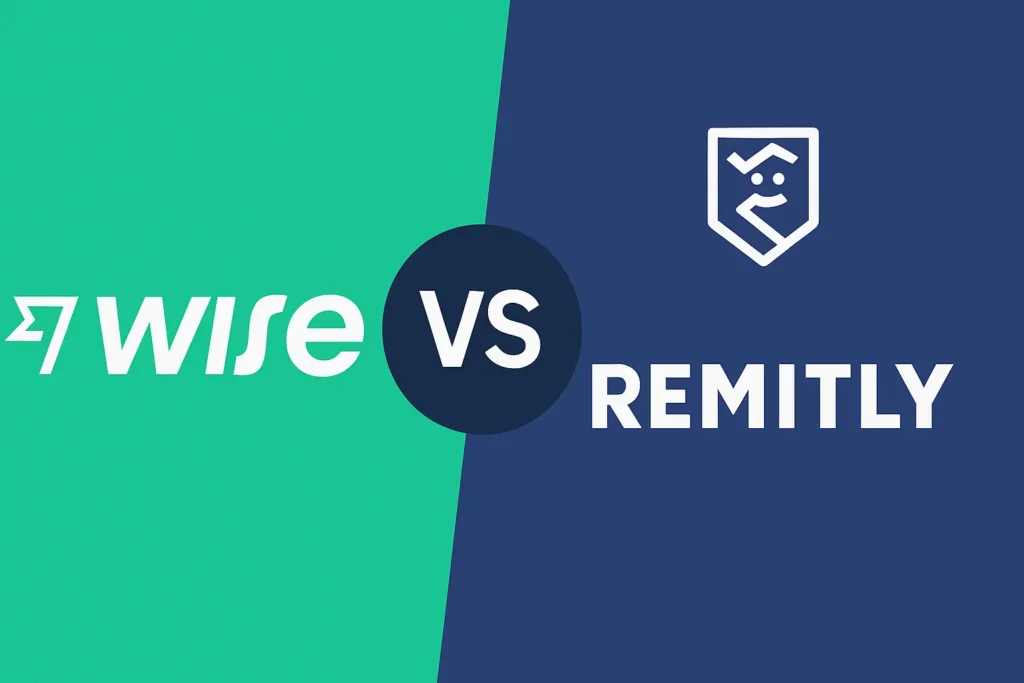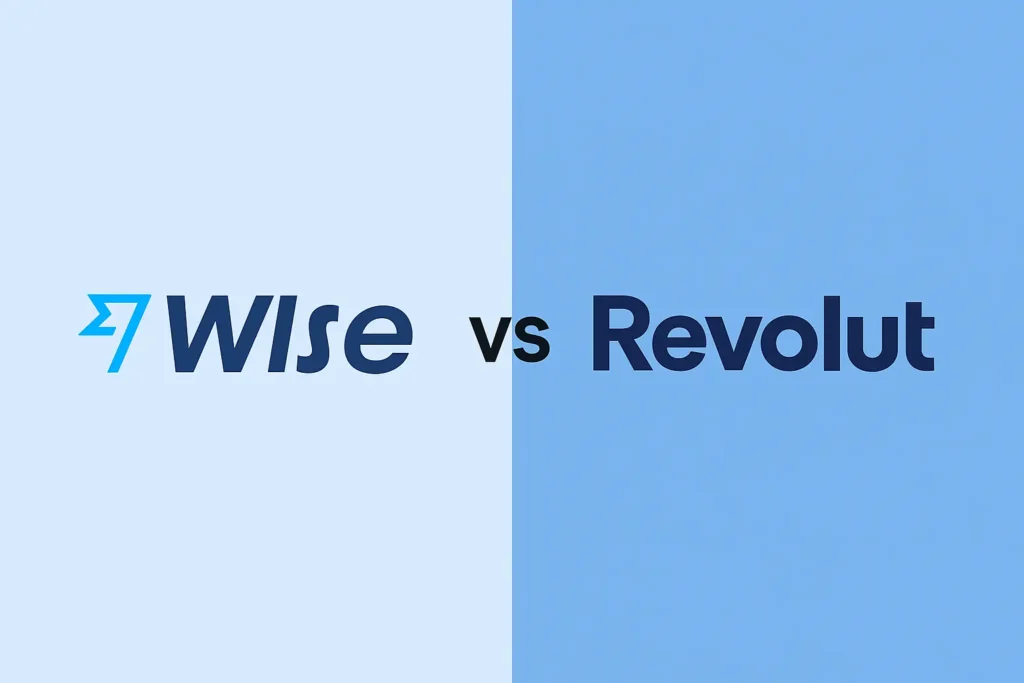The cryptocurrency arena has changed significantly, and the selection of crypto exchanges has become a significant juncture in the trading experience. With crypto trading platforms now handling billions of dollars in volume daily, the stakes have become enormous. If you were to take two immensely popular platforms and pit them against each other in a contest of features, functions, and finesse, what would the outcome be?
That’s just what this piece on xyrlo.com aims to answer, in a comparison between two of the biggest names in the game: Binance and Coinbase.
According to recent data, cryptocurrency exchanges have assumed the role of the principal portal for the entrance of both institutional and retail investors into the digital asset domain. With that in mind, which platform is best suited for you?
Binance Review: The World’s Largest Crypto Trading Platform
The world’s largest cryptocurrency exchange by trading volume is Binance, with an annual trade value of more than $1.5 trillion. It began life in 2017. Still, the platform has moved from a basic, straightforward trading interface to a powerful ecosystem that includes everything from spot trading to a nascent NFT e-commerce platform.
Binance has also become extremely innovative in the cryptocurrency sector, launching many successful products and platforms that have brought them into direct competition with the usual suspects (and then some) at the top of the crypto pyramid.
Key Strengths That Keep Me Using Binance:
- Over 350 cryptocurrencies are supported globally (and way more than that if you’re using the regularly censoring American version, Binance.US, which supports around 150 coins and counting)
- The fees are super low starting at about 0.1 percent
- You’ve got all these advanced trading tools that allow you to trade futures, options, and a whole lot of margin trading going on
- You’ve got at least 60 assets you can stake, i.e., make them work for you, while you just sit and vegetate
Still, Binance’s adventure hasn’t been all plain sailing. The year 2024 brought with it considerable regulatory challenges. That same year, Changpeng Zhao stepped down from the seat of power amid accusations of laundering allegations. The situation resulted in the appearance of operational problems in various countries. This has left Binance looking for somewhere—anywhere—else to base itself, with complete bans now in place in Canada and the UK.
As one Reddit user noted in a recent discussion:
Coinbase Review: America’s Most Trusted Cryptocurrency Exchange
The traditional financial establishment is now embracing the realm of cryptocurrencies, and Coinbase is its front man. As a public company traded on NASDAQ, it must meet the rigorous oversight standards of federal securities and banking regulators. It’s the public face of an industry that, up to now, has labored under the weight of scandal after scandal.
What Sets Coinbase Apart:
- Traded on public markets and fully regulated by the SEC
- Accounts insured by the FDIC up to $250,000
- Interface designed for ease of use by beginners
- Available in all 50 US states, unlike many competitors
- Broad range of institutional services rendered through Coinbase Prime
The regulatory promise made by the platform has borne fruit. Unlike Binance, Coinbase has continued operations in all the major Western jurisdictions without significant regulatory roadblocks.
Binance vs Coinbase: Side-by-Side Comparison Table
| Feature | Binance (Global) | Binance.US | Coinbase | Coinbase Pro |
| Trading Fees | 0.011% – 0.1% | 0% – 0.38% | 0.5% – 4.0% | 0% – 0.60% |
| Withdrawal Fees | Variable | Variable | Up to $60 | Up to $60 |
| Cryptocurrencies | 350+ | 150+ | 260+ | 260+ |
| US Availability | ❌ Banned | ✅ Limited (36 states) | ✅ All 50 states | ✅ All 50 states |
| Regulatory Status | Private company | Private company | Public (NASDAQ: COIN) | Public (NASDAQ: COIN) |
| Margin Trading | ✅ Yes | ❌ No | ❌ No | ❌ No |
| Futures Trading | ✅ Yes | ❌ No | ❌ Limited | ❌ Limited |
| Staking Options | 60+ assets | 21 assets | 9 assets | 9 assets |
| Mobile App Rating | 4.3/5 (App Store) | 3.9/5 | 4.1/5 | 4.1/5 |
| Customer Support | 24/7 Chat/Email | 24/7 Chat/Email | Phone/Email/Chat | Phone/Email/Chat |
| Security Insurance | SAFU Fund | SAFU Fund | FDIC (USD only) | FDIC (USD only) |
| Advanced Charts | ✅ TradingView | ✅ Basic | ✅ Basic | ✅ Advanced |
| API Access | ✅ Full | ✅ Limited | ✅ Full | ✅ Full |
Crypto Exchange Fees: Breaking Down the Real Costs
Your earnings are directly affected by the rates and kinds of fees that trading platforms charge, especially if you trade frequently. The platforms begin to reveal their individual personalities right here in the fee territory, where you make your money and, while you’re at it, either pay through the nose or work for a fraction less on your next trade.
Advantage of Binance Fees: The strongest driving factor for using Binance is its fee structure. The amount charged for spot trading is only 0.1 percent, with discounts available through holding and using the BNB token. Even at high trading volumes, discounts can bring fee rates down to as little as 0.02 percent.
According to CoinLedger’s 2025 analysis, Binance maintains “some of the lowest fees in the industry,” making it particularly attractive for frequent traders.
Coinbase’s Premium Pricing: Coinbase’s fee structure reflects its positioning as a premium, regulated platform. While standard Coinbase charges 0.5-4% for basic purchases, the Advanced Trade interface offers competitive rates from 0-0.60%.
However, fee transparency remains an issue. As CoinLedger notes:
“Coinbase is not fully transparent about fees. The exchange says that fees ‘are calculated at the time you place your order and may be determined by a combination of factors, including the selected payment method, the size of the order, and market conditions.'”
A Reddit user’s experience illustrates this frustration:
“Yesterday I wanted to deposit around 1400 dollar and the fee was 20$ (I use the pro version)”
Hidden Costs to Consider:
- Withdrawal fees: Binance charges network fees, while Coinbase adds markup
- Spread costs: Both platforms profit from bid-ask spreads
- Conversion fees: International users face additional currency conversion charges
Cryptocurrency Exchange Comparison: Features That Matter Most
The feature battle reveals each platform’s target audience clearly.
Trading Tools and Analytics: Binance excels with institutional-grade features including advanced order types, margin trading (up to 10x leverage on global platform), and comprehensive futures markets. The platform integrates TradingView charts and offers algorithmic trading through its API.
Coinbase focuses on accessibility over complexity. While it lacks advanced trading features, it compensates with educational content and intuitive interfaces that don’t overwhelm newcomers.
Cryptocurrency Selection: Both platforms support major cryptocurrencies, but Binance’s selection dwarfs competitors. The global platform lists 350+ tokens, including numerous altcoins unavailable elsewhere. Coinbase’s 260+ selection focuses on vetted, established projects.
Security Measures: Security approaches differ significantly:
Coinbase Security:
- 98% of funds stored in offline cold storage
- FDIC insurance for USD deposits
- SOC 2 Type 2 compliance
- Biometric authentication
Binance Security:
- SAFU (Secure Asset Fund for Users) emergency fund
- Advanced risk management systems
- Multi-tier security architecture
- Regular security audits
Recent incidents highlight the importance of robust security. While Binance experienced a major hack in 2019 resulting in $40 million losses, the SAFU fund fully compensated affected users. Coinbase has maintained a cleaner security record but offers limited insurance coverage for crypto holdings.
Best Place to Buy Crypto: User Experience Showdown
User experience often determines long-term platform loyalty, especially for newcomers to cryptocurrency.
Onboarding and Verification: Coinbase streamlines the verification process with clear documentation requirements and typically approves accounts within 24-48 hours. The platform’s partnership with traditional financial institutions enables seamless bank connections.
Binance.US requires more extensive verification, particularly for higher withdrawal limits. Some users report waiting weeks for account approval, though this varies by jurisdiction.
Interface Design: The platforms take opposite approaches to interface design:
Coinbase Interface:
- Clean, minimalist design
- One-click buying for popular cryptocurrencies
- Built-in wallet with easy portfolio tracking
- Extensive educational resources through Coinbase Learn
Binance Interface:
- Information-dense with numerous trading options
- Customizable dashboard for advanced users
- Multiple trading modes (Lite, Pro, Margin)
- Overwhelming for beginners but powerful for experienced traders
Customer Support Quality: Customer support remains a pain point for both platforms. Reddit discussions frequently mention slow response times and resolution delays.
Recent user experiences on Reddit highlight ongoing issues:
However, Coinbase’s phone support option provides an edge for urgent issues, though wait times can extend beyond an hour during peak periods.
Mobile App Performance: Both platforms offer robust mobile apps, but with different strengths:
- Binance: Feature-rich app mirroring desktop functionality
- Coinbase: Simplified mobile experience focusing on core trading features
App Store ratings reflect user satisfaction: Binance (4.3/5), Coinbase (4.1/5).

The Verdict: Choosing Your Ideal Crypto Exchange
The choice between Binance and Coinbase ultimately depends on your trading style, experience level, and regulatory preferences.
Choose Binance If:
- You’re an experienced trader seeking advanced features
- Low fees are your primary concern
- You trade frequently or in high volumes
- You want access to emerging cryptocurrencies
- You’re comfortable with higher regulatory risk
Choose Coinbase If:
- You’re new to cryptocurrency
- Regulatory compliance is paramount
- You prefer user-friendly interfaces
- You want FDIC-insured USD deposits
- You value educational resources
For most US-based investors, Coinbase represents the safer choice due to its regulatory compliance and transparent operations. The premium fees reflect the cost of operating within established financial frameworks.
However, experienced traders may find Binance’s feature set and low fees irresistible, despite regulatory uncertainties. The platform’s comprehensive trading tools and extensive cryptocurrency selection make it ideal for sophisticated strategies.
The cryptocurrency exchange landscape continues evolving rapidly. Both platforms face increasing competition from decentralized exchanges and emerging competitors. Your choice should align with your immediate needs while considering the platforms’ long-term viability and regulatory outlook.
Remember: Never invest more than you can afford to lose, and always prioritize security over convenience when dealing with digital assets.
This comparison reflects data as of August 2025. Cryptocurrency regulations and platform features change frequently, so always verify current information before making investment decisions.



